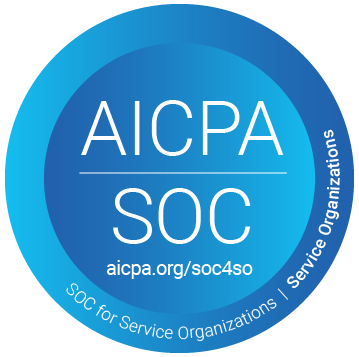What Is a COI Tracking System and Why Every Compliance Team Needs One

Why Manual Certificate Tracking No Longer Works
In a business environment where compliance risk can derail multimillion-dollar projects, relying on spreadsheets or email chains to manage Certificates of Insurance (COIs) is no longer sustainable. From missed expirations to legal liability, manual systems are rife with hidden costs.
Enter the COI tracking system—a purpose-built software solution that automates the process of collecting, verifying, and monitoring COIs to help organizations stay compliant, reduce risk, and save time.
In this post, we’ll explore what a COI tracking system actually does, how it works, and why it’s becoming essential for every compliance, procurement, and risk management team.
What Is a COI Tracking System?
A COI tracking system is a software platform that centralizes and automates the lifecycle of certificates of insurance. It enables organizations to:
✅ Collect and store COIs from third parties and vendors
✅ Track expiration dates and insurance coverage status
✅ Set and enforce custom compliance requirements
✅ Automate renewal reminders and compliance alerts
✅ Generate audit-ready compliance reports
Unlike traditional systems (manual spreadsheets, static folders), a COI tracking system ensures real-time visibility across your vendor ecosystem—ensuring no contractor, supplier, or tenant operates without valid insurance.
If you’re looking to streamline operations and reduce manual workload, this type of system is a cornerstone of modern compliance.
Why COI Tracking Systems Matter More in 2025
The compliance landscape is more complex than ever:
- Regulations vary by state, industry, and contract
- Projects involve more third-party vendors than ever before
- Audit frequency and depth are increasing
- Liability risks tied to uninsured parties are growing
In our related post, Advanced COI Management – Tips for Handling Complex Compliance Requirements Across Multi-State Operations, we highlight how SmartCompliance clients use state-specific rules in their COI tracking systems to stay compliant across jurisdictions.
The reality is this: one expired COI can trigger a cascade of problems—from breach of contract and fines to lost revenue. A dedicated COI tracking system acts as your compliance watchdog.
How Does a COI Tracking System Work?
Here’s what a modern COI tracking system like SmartCompliance delivers:
1. Automated COI Collection & Verification
Vendors upload certificates directly through a portal. The system uses Optical Character Recognition (OCR) to read, extract, and verify insurance data.
See also:
The Future of Compliance: How Technology is Redefining COI Management.
2. Real-Time Expiration Tracking & Alerts
Never miss a renewal date again. The system automatically flags expiring COIs and sends customizable alerts to both internal teams and vendors.
Related reading:
How to Manage COI Renewals Effectively with Automation.
3. Custom Compliance Rules
Create rules based on project type, insurance requirements, vendor category, or location. The system flags documents that fail to meet minimum thresholds.
4. Centralized, Searchable Repository
Every COI, policy, and vendor document is stored in one place with filters by status, vendor name, expiration date, or coverage limits.
Pro tip:
Facing Regulatory Requirements with COI Tracking Software explains how centralized storage supports compliance reporting.
5. Audit-Ready Reporting
Generate on-demand reports showing compliance status across your entire vendor base. Customize by date range, policy type, or COI expiration risk.
COI Tracking in Action: A Real Use Case
A property management firm with 300+ vendors moved from Excel to SmartCompliance and saw the following results:
COI renewal compliance
within 3 months
Cut audit prep from 10 days to 2.
Flagged 27 expired COIs that posed liability risks.
Fully passed a state compliance audit with zero penalties.
This isn’t just anecdotal—COI tracking systems enable measurable operational improvements.
Why Every Compliance Team Needs One (Now)
If your team is responsible for any of the following, a COI tracking system is no longer optional—it’s essential:
- Verifying insurance for vendors, contractors, or tenants
- Preparing for audits or regulatory reviews
- Managing multi-location or multi-state operations
- Avoiding costly coverage gaps or liability claims
As outlined in Essential Compliance Metrics for 2025, metrics like COI expiration rates, vendor compliance rates, and resolution time are best tracked using a centralized COI solution.
Benefits at a Glance
| MANUAL PROCESS | COI TRACKING SYSTEM |
Expiration Alerts: ❌ | Expiration Alerts: ✅ |
Custom Rule Enforcement: ❌ | Custom Rule Enforcement: ✅ |
Vendor Communication Automation: ❌ | Vendor Communication Automation: ✅ |
Searchable COI Repository: ❌ | Searchable COI Repository: ✅ |
Audit-Ready Reporting: ❌ | Audit-Ready Reporting: ✅ |
Your COI Process Needs a 2025 Upgrade
The days of static spreadsheets and email trails are over. If you want to eliminate coverage gaps, reduce liability, and simplify audits, investing in a COI tracking system is one of the smartest decisions your compliance team can make.
Ready to Go Automated? Book a Live Demo to see how SmartCompliance simplifies COI tracking.


